§21 - Turn-based Combat breakdown
What are turns? What are action points? Isn’t there a better way to do intelligent combat?
- Unknown philosopher, 21 century.
What follow is a detailed introduction into Eidolons innovative turn-based combat mechanics. Grab a coffee and open up your mind to the violent mysteries of war and tactics!
... Eidolons combat is designed to make you feel right in the skin of the hero. You will desperately fend off blows, turn and pivot, take out foes just before they can get you, let the killing blows miss you by a hair. You will move in a dance around the field of battle, avoid and neutralize threats, balance on the edge of the precipice.
Yes, turn-based games can be intense. Sometimes too intense perhaps!
Old but self-evident
The main idea in Eidolons was to base combat solidly in reality despite its being turn-based. And in this I believe it succeeded! So what came out of it?
Mainly, same as in real fight, game encourages that planning be done dynamically. Situation on the battlefield is constantly changing, predictions are bound to be imperfect, and opportunities often emerge unexpected.
First iteration of combat design in Eidolons was *really* different. Each action queued up with ‘seconds to complete’ in what essential is simultaneos turns system. I will not go into detail - for it did not survive the trials of public opinion - and of needing to make a decent UI. I buried my stillborn dream, shed a tear, and carried on. I realized I had to do at least something in a slightly more proven way.
Then I remembered this...
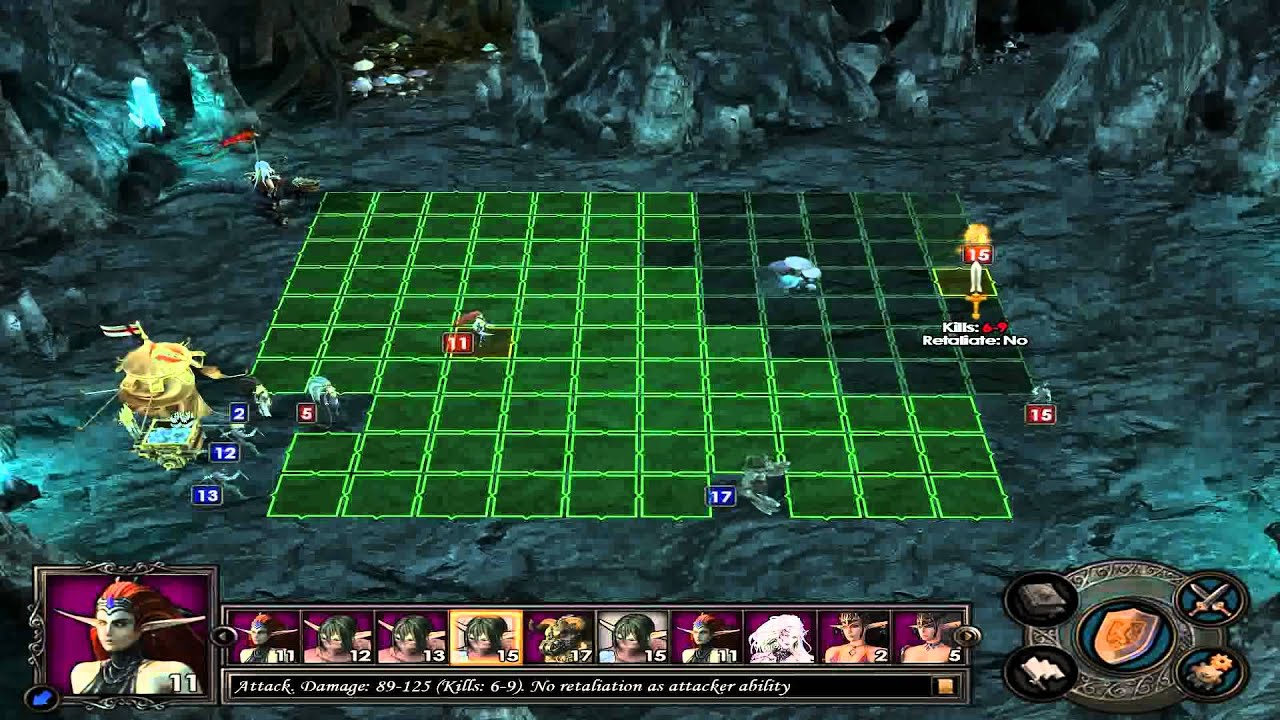
The first time I played Heroes of Might and Magic V (of course, I was too impatient for any tutorials), I could not understand what was going on at first. Why my poor zombie just couldn’t seem to get anything done and got hit so many times before he even moved? But then it started to make sense, intuitively. Everything except Furies at least. But we love them anyway.
I still couldn’t say if I liked the system, but I saw the potential, and was intrigued.
I also wondered - in a less army-related game, why not base it all on *real seconds*, make it easier to envision the flow of the melee?

So on the face of it, combat system in Eidolons is similar to the one used in the legendary turn-based strategy. As in HoMM5, units start with 0-0.25 ATB (aka “Readiness”) and build it up with Initiative until one of them has 1.0 and can take action.
The caveat is that each action is atomic and has its own cost in Readiness. For example, you will often find yourself performing a facing-change action before striking or cast. It will consume about 0.25 out of your 1 ATB; and after this, all units start growing their ATB again until one of them reaches 1 and gets to move, and so it goes.
The one thing I didn’t like is that they removed the bit of UI that allowed you to see where unit’ll be on ATB after its turn. So I made one for Eidolons as not lightly! Seeing ahead is crucial, and the more chaotic the battle seems the more satisfying it is to be able to navigate it, wouldn't you agree?
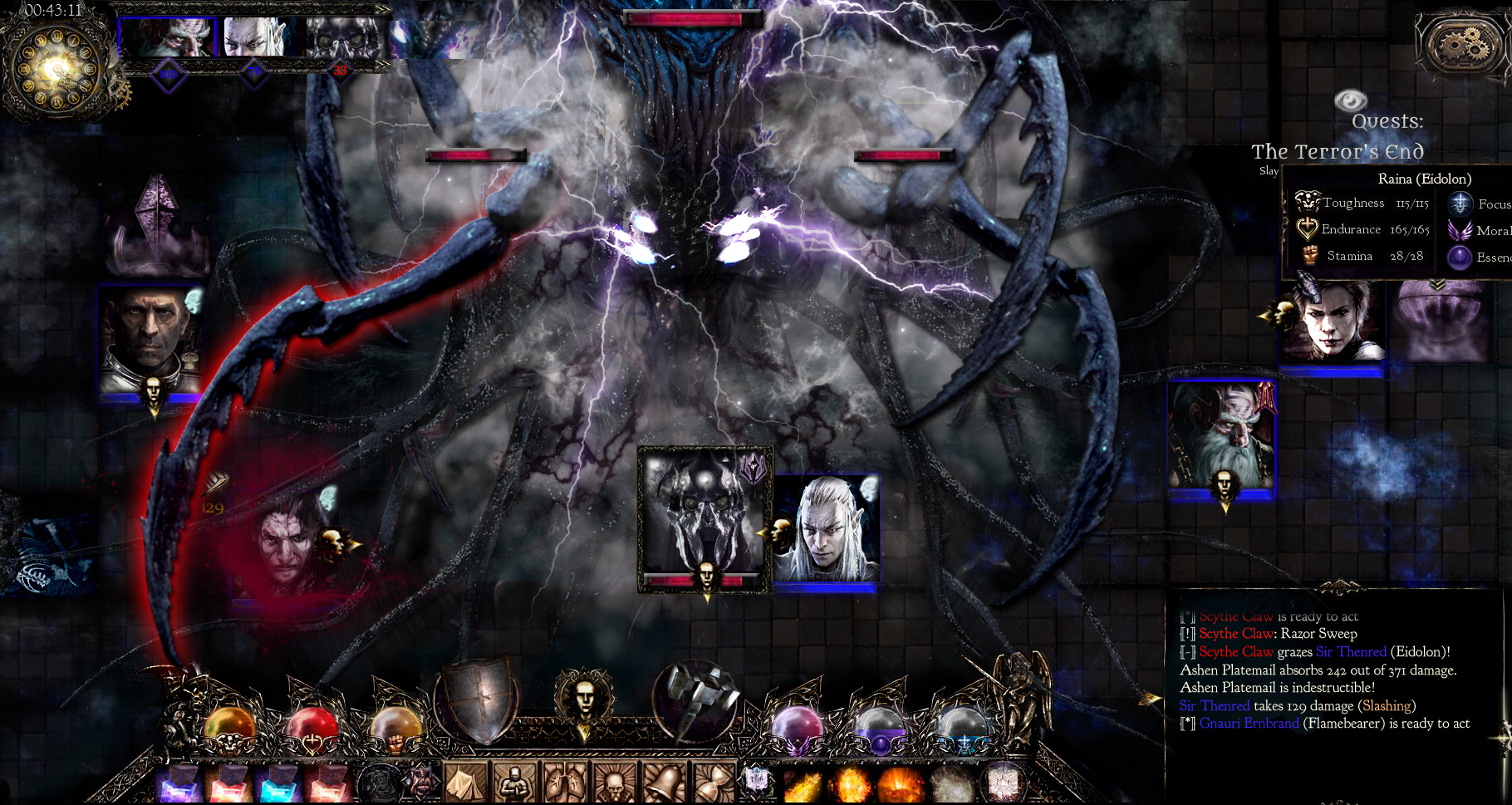
Composite bosses are made up of many parts - such as claws, tendrils and electro-brains - and each one moves at its own pace, unless you hit the head really hard (not all of them have a head).
Another interesting bit is that Eidolons system is directly related to real time. Each round has 10 seconds, and initiative of 10 (default) means that to get from 0 to 1 Readiness, the unit will need 10 seconds. Of course, to end up with 0 Readiness, a unit has to be either stunned to take one of the costliest actions - a Two-Handed Sword Swing perhaps?
This mechanic ensures that no one just crosses the field, attacks, and goes back unpunished. Unless they are a mosquito fighting zombies, perhaps.
In addition, it creates scenarios in which you have to choose between trying to finish off an enemy before their Readiness
You must consider that maybe you have enough time to move, but not enough to strike
Manipulating Readiness or Initiative in midst of combat creates a lot of tactical possibilities - things like bashing, freezing, or time-dilation can bring glorious chaos and a feeling of cheating death. Or being toyed with by a foe intolerable! :)

The system aligns well with timed-effects like Channeled spells, periodic effects, sustained abilities, cooldowns and effect durations which all rely on the real seconds at the base of the round-system.
As a result, I feel that combat in Eidolons is like a dance with death - measured, cautious, razor-sharp. No one takes too many hits to bring down, so you will have to watch it. Especially if the enemy looks something like this
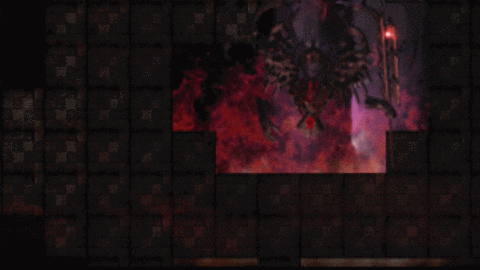
Either way, to succeed, you must be aware of what each enemy can do at each point in time. Can you sneak by this slow axeman while he’s still getting his bearings, or will you pay with a limb for it? Can you step out of that tree, shoot an arrow and step back without having this wizard discharge his lightning bolt at you? These things will become intuitive quickly, so the flow of possibilities and dangers will race through your mind as you re-align your strategy with each new development.
All in all, I am very excited what can be done with this system. In fact, making and playing it destroyed my ability to play other turn-based games for a long time, so be warned, it’s a red pill!
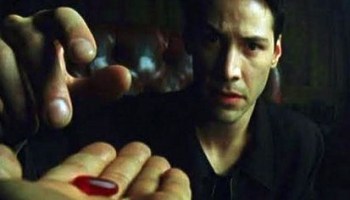
Part II - Devil's in the Details
An Addendum for Hardcore Tacticians or Nerds in which we examine a few essential things that make up our combat experience.
The Notorious Miss %
How many good tactical games were ruined for me by arbitrary approach to misses!
Seemed stupid to me as a player. But the right way to do miss percentages have taken a long time to figure out, it’s my third iteration now in fact! 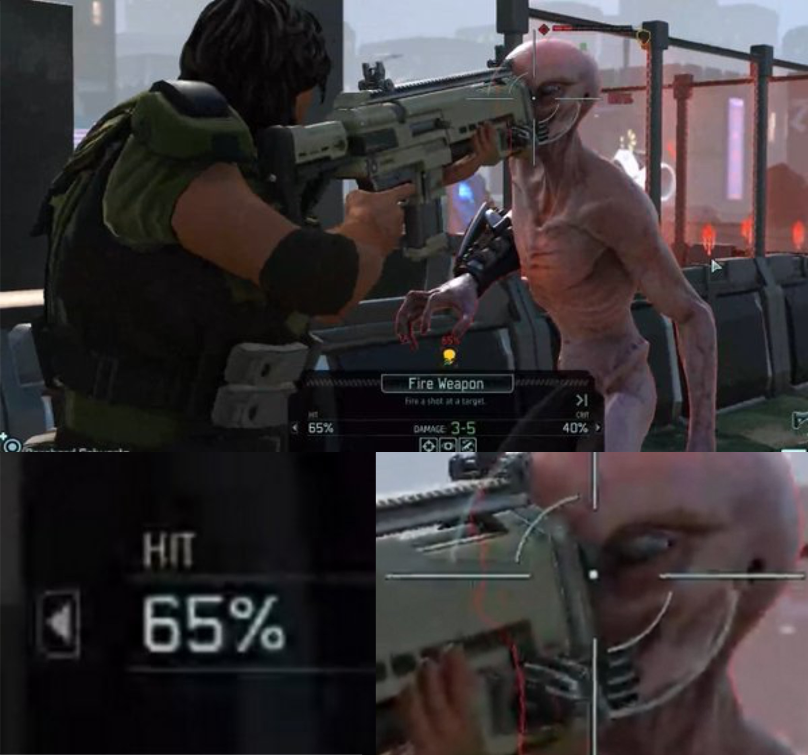
(of course, whether it hits or misses will be seen a bit later)
In Eidolons each action has a base value of complexity - e.g. simple speak poke is 0, so it’s a 100% success by default, while a decapitating scythe strike is 50, so it’s a fifty-fifty even on a still target.
This value is used in a formula along with accuracy, defense and dodge, visibility, luck and number of times it was attempted. The result is, it’s intuitive enough so you soon start to guess the % you will see before it pops up in the tooltip.
Focus
Nothing can be really done reliably without Focus.
I tried to create a system that would reflect somewhat how humans real ability to focus works.
Here are a few things from the real world that I wanted to mimic:
- We try to maintain a certain baseline of focus at all times. By default, this baseline is pretty low compared to what we’re capable of
- When bad things happen, our focus will increase
- If we force ourselves to focus, we will pay for it with focus-fatigue later (if that wasn’t true, casual games wouldn’t exist probably!)
- Zero focus results in strange behavior
And it translated into following game rules:
- Focus always tends towards your Base Focus, which is usually below 40%. The greater the difference between your current value and your Base, the faster it will change.
- Things like getting injured, spotting a new threat and being targeted with a new type of ability all provide one-time bonus to Focus value. You can literally bore you enemy to death if you use the same attack over and over, then kill them in one blow when their attention lapses. I believe it is a thing in historical martial arts.
- During each engagement, you can use forced Concentration to increase you Focus value. It will however decrease your Base Focus until end of the battle. Don’t overuse it.
- Zero focus makes the unit Confused. They do random actions, on random targets. So a group of Confused enemies may look rather hilarious. And so can your hero!
Remember - forced Concentration is a short burst of high focus at the cost of long term fatigue!
Mode Actions
Some battles are won with a superior passive stance. Know how to use the brief moment of respite. Preparedness is mother of victory.
Mode Actions allow you to better control the flow of battle. Some of them are Active - like Search, Stealth and Guard Modes - they merely apply additional ATB cost to your actions, effectively ‘slowing you down’ in exchange for some benefit.
Other are Passive and will lock your ATB while they last. Usually when you enter a Passive Mode, you start gaining certain bonus from it - over time as with Rest restores Stamina, or sometimes passively as with Defense and Alert modes.
A Passive Mode is cancelled automatically after certain amount of time, or it can be interrupted if you are hit.
If the mode has Alert property, it will automatically cancel when you become targeted or adjacent to an enemy.
As far as tactics go, this means that finding the space to get brief respite is essential in more challenging engagements. This is what cover is used for most often in Eidolons - behind proper cover, enemy can neither see not range-attack you, though the reverse is true as well. It is also quite effective to set up ambushes behind corners via Alert mode. Your hero will passively rest at a slower rate, but when the enemy comes out and is in melee range, they will wake up and likely get the first hit, possibly still out of concealment, which adds sneak bonus.
Extra Attacks
In a duel, sometimes the decisive strike is not the one that you planned for. It's a dance!
Real fighting is highly chaotic. Sometimes you barely know how your weapon even got to the enemy.
There are three types of Extra Attacks - Attack of Opportunity, Counter Attack and Instant Attack. The idea behind these is that even units that are greatly disadvantaged in terms of Initiative should remain a threat.
Instant Attacks that check your movement, Attacks of Opportunity that don’t let you rummage in your backpack unpunished when near them, and of course Counter Attacks of which some may have quite a number each round.
More in-depth:
Counter Attacks
The classic riposte after getting hit. There are a few caveats:
- Only happen if readiness is sufficient
- Can be made more effective by certain Passive Modes
- They also consume a small portion of ATB that the attack actually costs (any attack action can end up as a Counter Attack, but some are better than others)
- Unit's CA behavior can be turned to: off, optimal and maximum impact.
Instant attacks
if something practically walks into you, and you aren’t too slow to just lift you weapon and take a quick stab at it, voila, Instant Attack happens! Each weapon usually has only 1 type of strike that can be an IA (e.g. on swords it is Thrust, not Swing or Hilt Smash…)
Attack of Opportunity
A tribute to the classics, I found it convincing enough that at least things like opening a backpack in the middle of a melee should be punished with a quick stab of fortune, er, Attack of Opportunity.
Eidolons: Netherflame
A Dark Tactical Roguelike/cRPG with deep Hero Customization, Random Dungeons, gripping Story and a harrowing Atmosphere
| Status | In development |
| Author | EiDemiurge |
| Genre | Role Playing |
| Tags | 2D, Character Customization, Dark Fantasy, Fantasy, Roguelike, Tactical, Tactical RPG, Top-Down, Turn-based |
More posts
- The Backer demo is out , watch the first half, then play it in full!Sep 25, 2019
- §28 - CROWDFUNDING CAMPAIGN IS LIVE! :)Sep 18, 2019
- §27 - the Netherflame campaign has begun!Jul 20, 2019
- §26 - Back in the fray, with new plans and ideas!Jul 04, 2019
- §25 - The crunch is over, the Demo's testing is now, and the crowdfunding ... D...Jun 04, 2019
- §24 - The Demo crunch, the first Boss, many new things and... another delay :)May 14, 2019
- §23 - A Demo, An Interview, and a little delayApr 23, 2019
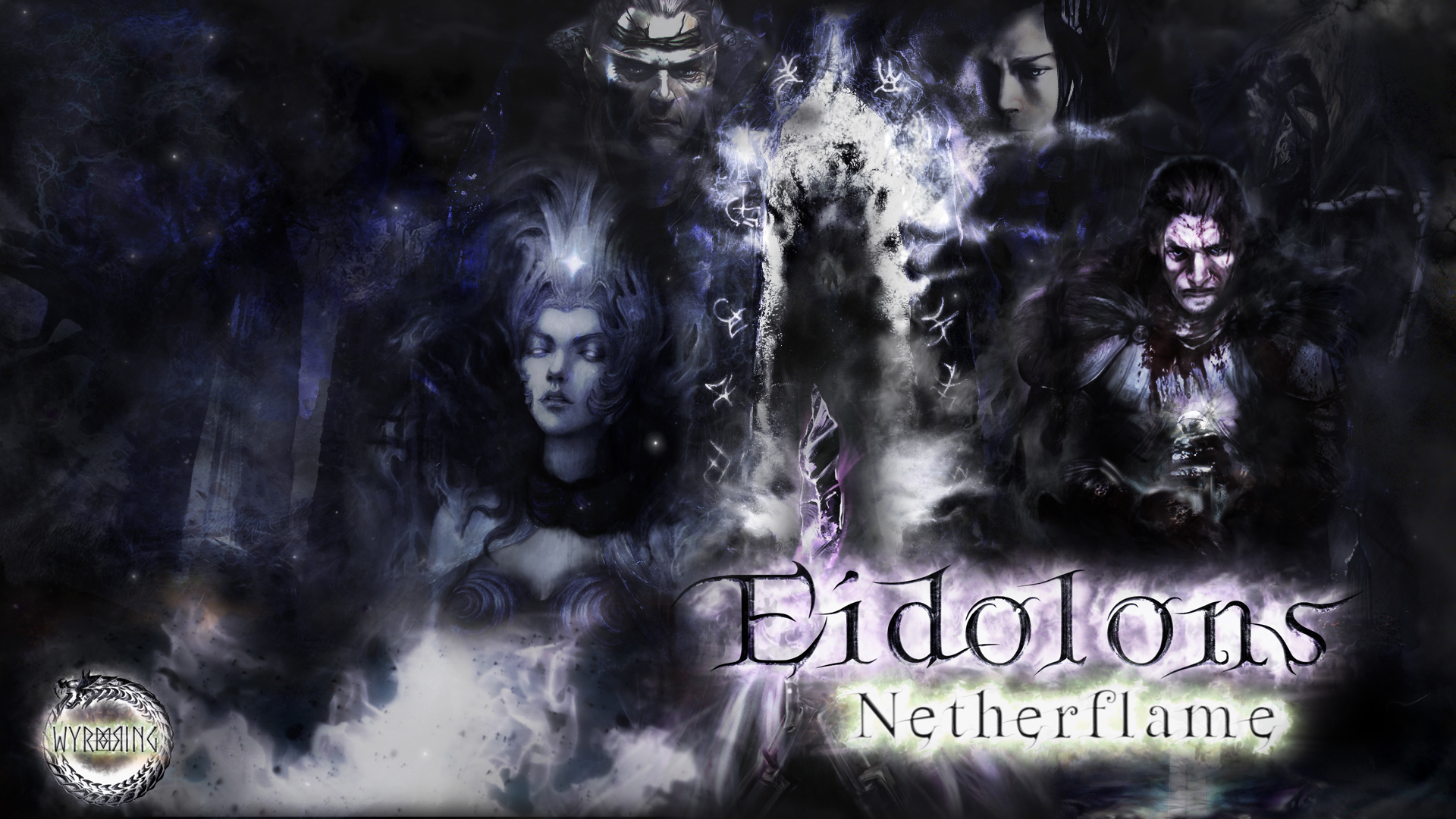
Leave a comment
Log in with itch.io to leave a comment.